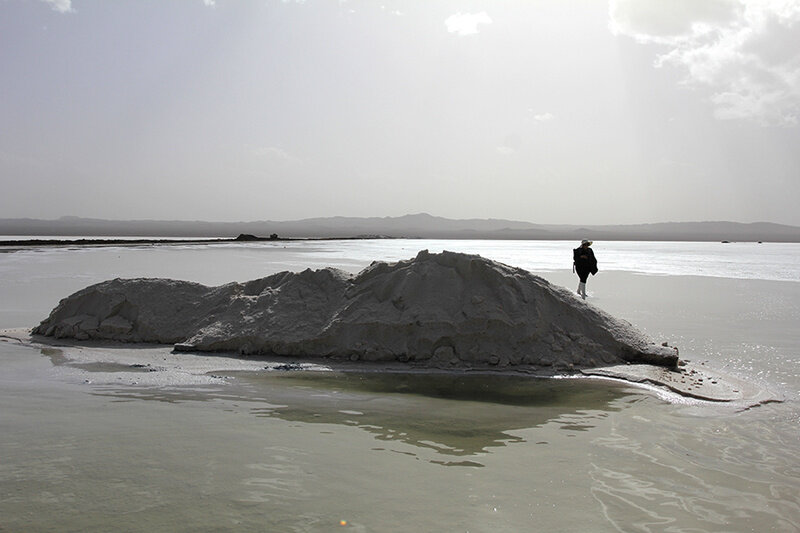Namak Lake not to generate SDSs this year: official

TEHRAN – Namak Lake, located in the central Qom province, will not be a hotspot for sand and dust storms (SDSs) for a year due to the recent rainfall which moisturized the soil, Masoud Baqerzadeh Karimi, the director general of aquatic ecosystems at the Department of Environment has said.
Namak Lake is a salt lake in Iran. It is located approximately 100 km east of the city of Qom and 60 km of Kashan at an elevation of 790 meters above sea level.
Wetlands around province of Qom have dried up due to drainage or low precipitations as well as overgrazing which resulted in total disappearance of plant species and severe soil erosion, so that the wetlands turned into hotspots generating dust.
The Namak Lake consists of two wetlands namely, Hoz-e Soltan and Hoze-e Mareh, which are mainly filled by snow, rain and salty rivers across the province. When rain comes down in the province firstly Hoz-e Mareh is filled and then Hoz-e Soltan.
Mareh wetland has also been expanded by 60 percent, so that migratory birds have flown to the area again, he stated.
He went on to note that water flowed in 70 percent of the Hoz-e Soltan wetland, adding, so both wetlands are in good condition.
He concluded that SDSs will not rise from Namak Lake this year, hopefully.
Based on the latest data published by National Drought Warning and Monitoring Center affiliated to Iran’s Meteorological Organization since the beginning of the current water year (September 23, 2018) the whole country received 294 millimeters of rain.
The number amounted to 129.9 millimeters in the previous water year and 206.4 millimeters in the long-term, the data indicated. The numbers show a drastic increase of 126.3 percent compared to last water year. It also reveals a 42.4 percent increase compared to long-term means.
Province of Qom also met above normal rainfall averages amounting to 256 millimeters during the current crop year, while last year, it only rained some 92 millimeters in the province, so this year, the precipitation rates exceeded both of last year and long-term means by 178.3 and 82.9 percent, respectively.
FB/MQ/MG
Leave a Comment